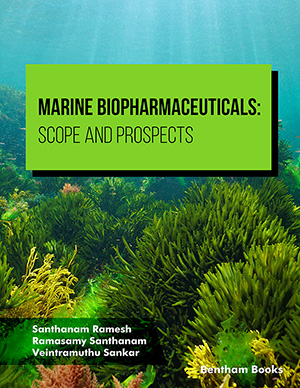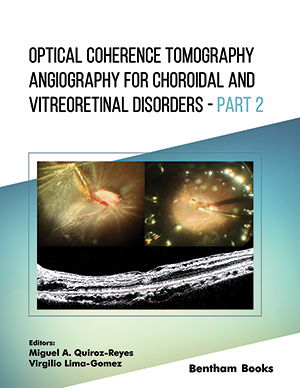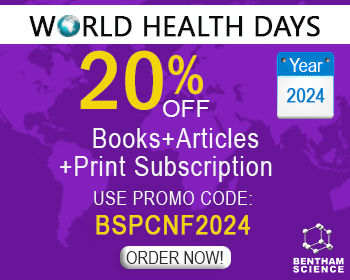Abstract
Food allergies, defined as an immune response to food proteins, affect as many as 8% of young children and 2% of adults in western countries, and their prevalence appears to be rising like all allergic diseases. In addition to well-recognized urticaria and anaphylaxis triggered by IgE antibody– mediated immune responses, there is an increasing recognition of cell-mediated disorders, such as eosinophilic esophagitis and food protein–induced enterocolitis. Non-IgE-Mediated gastrointestinal food allergies are a heterogeneous group of food allergies in which there is an immune reaction against food but the primary pathogenesis is not a production of IgE and activation of mast cells and basophils.
Those diseases tend to affect mainly the gastrointestinal tract and can present as acute (FPIES) or chronic reaction, such as Eosinophilic Esophagitis (EoE), Food Protein-Induced Allergic Proctocolitis (FPIAP). The role of food allergy in Non-EoE gastrointestinal Eosinophilic disorders (Non- EoE EGID) is poorly understood.
In some diseases like EoE, T cell seems to play a major role in initiating the immunological reaction against food, however, in FPIES and FPIAP, the mechanism of sensitization is not clear.
Diagnosis requires food challenges and/or endoscopies in most of the patients, as there are no validated biomarkers that can be used for monitoring or diagnosis of Non-IgE mediated food allergies.
The treatment of Non-IgE food allergy is dependent on diet (FPIES, and EoE) and/or use of drugs (i.e. steroids, PPI) in EoE and Non-EoE EGID.
Non-IgE mediated food allergies are being being investigated.
Keywords: Food Allergy, IgE, non-IgE, immune, eosinophilic, diagnosis, mediated.
[http://dx.doi.org/10.1016/S0091-6749(99)70411-2] [PMID: 10329801]
[http://dx.doi.org/10.2332/allergolint.09-RAI-0138] [PMID: 19847094]
[http://dx.doi.org/10.1016/S0091-6749(99)70167-3] [PMID: 10359874]
[http://dx.doi.org/10.1016/j.mcna.2005.08.012] [PMID: 16310526]
[http://dx.doi.org/10.1146/annurev.nutr.26.061505.111211] [PMID: 16602930]
[http://dx.doi.org/10.1258/jrsm.2008.070306] [PMID: 18344471]
[http://dx.doi.org/10.1016/j.iac.2011.10.002] [PMID: 22244239]
[http://dx.doi.org/10.1038/ajg.2013.71] [PMID: 23567357]
[http://dx.doi.org/10.1007/s12016-015-8501-z] [PMID: 26194940]
[PMID: 24035773]
[http://dx.doi.org/10.1016/j.jaci.2011.02.040] [PMID: 21477849]
[http://dx.doi.org/10.1111/j.1572-0241.2003.07390.x] [PMID: 12738455]
[http://dx.doi.org/10.1038/ajg.2012.468] [PMID: 23381017]
[http://dx.doi.org/10.1038/ajg.2017.107] [PMID: 28417991]
[http://dx.doi.org/10.1111/apt.13953] [PMID: 28112427]
[http://dx.doi.org/10.1016/S1081-1206(10)61151-9] [PMID: 16279563]
[http://dx.doi.org/10.1097/MPG.0b013e3181788282] [PMID: 19172120]
[http://dx.doi.org/10.1056/NEJM200408263510924] [PMID: 15329438]
[PMID: 22619364]
[PMID: 26857345]
[PMID: 27617420]
[http://dx.doi.org/10.1016/j.gie.2006.04.037] [PMID: 16923475]
[http://dx.doi.org/10.1016/j.cgh.2007.11.008] [PMID: 18237866]
[http://dx.doi.org/10.1016/j.jaci.2011.02.040] [PMID: 21477849]
[http://dx.doi.org/10.1053/j.gastro.2007.08.017] [PMID: 17919504]
[http://dx.doi.org/10.1097/ACI.0000000000000200] [PMID: 26258919]
[http://dx.doi.org/10.1016/S0091-6749(84)80017-2] [PMID: 6699309]
[http://dx.doi.org/10.1007/s00281-012-0324-x] [PMID: 22842863]
[http://dx.doi.org/10.2174/156652408785161023] [PMID: 18691061]
[http://dx.doi.org/10.1172/JCI26679] [PMID: 16453027]
[http://dx.doi.org/10.1177/2050640617732643] [PMID: 29774148]
[http://dx.doi.org/10.1038/ncomms6593] [PMID: 25407941]
[http://dx.doi.org/10.1038/ng.3033] [PMID: 25017104]
[http://dx.doi.org/10.1038/ng.547] [PMID: 20208534]
[http://dx.doi.org/10.1016/j.jaci.2013.02.030] [PMID: 23608731]
[http://dx.doi.org/10.1007/s10875-017-0429-z] [PMID: 28803389]
[http://dx.doi.org/10.1016/j.jaci.2016.10.045] [PMID: 28025013]
[http://dx.doi.org/10.1097/MPG.0000000000000253] [PMID: 24345843]
[http://dx.doi.org/10.1172/jci.insight.99922] [PMID: 29669943]
[http://dx.doi.org/10.1007/s10620-015-3740-7] [PMID: 26062820]
[http://dx.doi.org/10.1586/1744666X.2014.967684] [PMID: 25340427]
[PMID: 30394139]
[http://dx.doi.org/10.1016/j.jaci.2018.05.005] [PMID: 29803797]
[http://dx.doi.org/10.1111/all.12846] [PMID: 26799684]
[http://dx.doi.org/10.1007/s11894-015-0464-y] [PMID: 26292666]
[http://dx.doi.org/10.1016/j.anai.2017.11.016]
[http://dx.doi.org/10.1016/j.anai.2014.08.004] [PMID: 25216976]
[http://dx.doi.org/10.1016/j.anai.2010.10.010] [PMID: 21195949]
[PMID: 30578874]
[http://dx.doi.org/10.1053/j.gastro.2003.09.024] [PMID: 14724818]
[http://dx.doi.org/10.1038/s41395-018-0240-3] [PMID: 30315308]
[http://dx.doi.org/10.1016/j.jaci.2011.02.040] [PMID: 21477849]
[http://dx.doi.org/10.1016/j.anai.2018.05.035] [PMID: 30030146]
[http://dx.doi.org/10.1016/j.cgh.2015.07.041]
[http://dx.doi.org/10.1016/j.jaci.2014.08.043] [PMID: 25441638]
[http://dx.doi.org/10.1371/journal.pone.0050037] [PMID: 23185525]
[http://dx.doi.org/10.1016/S1542-3565(05)00885-2] [PMID: 16361045]
[http://dx.doi.org/10.1111/j.1572-0241.2007.01379.x] [PMID: 17581266]
[http://dx.doi.org/10.1053/j.gastro.2010.05.001] [PMID: 20457157]
[http://dx.doi.org/10.1053/j.gastro.2006.08.033] [PMID: 17101314]
[http://dx.doi.org/10.1016/S1542-3565(04)00240-X] [PMID: 15224281]
[http://dx.doi.org/10.1053/gast.2002.32998] [PMID: 11984507]
[http://dx.doi.org/10.1053/j.gastro.2010.07.048]
[http://dx.doi.org/10.1053/j.gastro.2012.04.049]
[http://dx.doi.org/10.1111/j.1398-9995.2009.02142.x] [PMID: 19796194]
[http://dx.doi.org/10.1053/j.gastro.2019.03.025] [PMID: 30922997]
[http://dx.doi.org/10.1056/NEJMoa1203229] [PMID: 22938716]
[http://dx.doi.org/10.1203/PDR.0b013e3181e69e36] [PMID: 20485203]
[http://dx.doi.org/10.1089/ped.2017.0779] [PMID: 29062584]
[http://dx.doi.org/10.1016/j.cgh.2006.05.026] [PMID: 16860614]
[http://dx.doi.org/10.1016/j.jaci.2012.12.664] [PMID: 23375693]
[http://dx.doi.org/10.1016/j.jaci.2017.08.038] [PMID: 29074457]
[http://dx.doi.org/10.1016/0016-5085(95)90637-1] [PMID: 7557132]
[http://dx.doi.org/10.1111/cea.13360] [PMID: 30714219]
[http://dx.doi.org/10.1016/j.jaci.2018.05.001] [PMID: 29980277]
[http://dx.doi.org/10.1053/j.gastro.2014.05.036] [PMID: 24907494]
[http://dx.doi.org/10.1016/j.jaci.2010.04.029] [PMID: 20542323]
[http://dx.doi.org/10.1136/gut.2009.178558] [PMID: 19828470]
[http://dx.doi.org/10.1016/j.jaci.2008.09.031] [PMID: 18951621]
[http://dx.doi.org/10.1111/all.12096] [PMID: 23379537]
[http://dx.doi.org/10.18176/jiaci.0254] [PMID: 29939132]
[http://dx.doi.org/10.1016/j.bpg.2007.09.001] [PMID: 18492567]
[http://dx.doi.org/10.1097/MPG.0b013e318181b1c3] [PMID: 18664881]
[http://dx.doi.org/10.1016/j.bpg.2007.09.002] [PMID: 18492568]
[http://dx.doi.org/10.1016/j.cgh.2011.07.017]
[http://dx.doi.org/10.1038/ajg.2014.166] [PMID: 24957155]
[http://dx.doi.org/10.1016/j.jaci.2014.07.026] [PMID: 25234644]
[http://dx.doi.org/10.1016/j.dld.2014.11.009] [PMID: 25547198]
[http://dx.doi.org/10.1097/MPG.0000000000000766]
[http://dx.doi.org/10.3748/wjg.v9.i12.2813] [PMID: 14669340]
[PMID: 21409859]
[http://dx.doi.org/10.1111/j.1398-9995.2007.01461.x] [PMID: 17919149]
[http://dx.doi.org/10.1055/s-2006-927138] [PMID: 17304405]
[http://dx.doi.org/10.1016/j.dld.2005.06.013]
[http://dx.doi.org/10.1097/00042737-200104000-00021] [PMID: 11338074]
[http://dx.doi.org/10.1016/j.jaip.2019.01.053] [PMID: 30763733]
[http://dx.doi.org/10.1016/j.gtc.2014.02.003] [PMID: 24813515]
[http://dx.doi.org/10.1016/S0025-6196(12)61640-1] [PMID: 8170195]
[http://dx.doi.org/10.1016/j.cgh.2010.04.022] [PMID: 20451664]
[http://dx.doi.org/10.1016/S0022-3476(78)80887-7] [PMID: 568171]
[PMID: 3956146]
[PMID: 30244024]
[http://dx.doi.org/10.1542/peds.111.4.829] [PMID: 12671120]
[http://dx.doi.org/10.1136/adc.2008.143289] [PMID: 18829623]
[http://dx.doi.org/10.1542/peds.2008-2029] [PMID: 19188266]
[http://dx.doi.org/10.1016/j.jaip.2013.05.011] [PMID: 24565539]
[http://dx.doi.org/10.1007/s11882-012-0272-5] [PMID: 22644865]
[http://dx.doi.org/10.1002/ccr3.1905] [PMID: 30656011]
[http://dx.doi.org/10.1016/j.anai.2018.02.025] [PMID: 29481888]
[http://dx.doi.org/10.1016/j.anai.2016.03.004] [PMID: 27613454]
[http://dx.doi.org/10.1159/000365104] [PMID: 25034379]
[http://dx.doi.org/10.1016/j.anai.2019.01.022] [PMID: 30742916]
[http://dx.doi.org/10.1016/j.jaci.2014.04.008] [PMID: 24880634]
[PMID: 27741073]
[http://dx.doi.org/10.1016/j.jaip.2018.09.009] [PMID: 30243880]
[http://dx.doi.org/10.1016/j.jaci.2015.03.025] [PMID: 25956013]
[http://dx.doi.org/10.1111/pai.12377] [PMID: 25808316]
[http://dx.doi.org/10.1186/1824-7288-39-48] [PMID: 23902622]
[http://dx.doi.org/10.1111/pai.12844] [PMID: 29197125]
[http://dx.doi.org/10.1067/mai.2001.114708] [PMID: 11344358]
[http://dx.doi.org/10.1111/j.1365-2222.2005.2324.x] [PMID: 16164451]
[http://dx.doi.org/10.1046/j.1365-2222.2001.01175.x] [PMID: 11591198]
[http://dx.doi.org/10.1046/j.1365-2745.2002.01454.x] [PMID: 12372134]
[http://dx.doi.org/10.1016/j.jaci.2005.02.038] [PMID: 15940149]
[http://dx.doi.org/10.1046/j.1365-2222.2000.00928.x] [PMID: 11069561]
[http://dx.doi.org/10.1111/j.1365-2222.2005.02150.x] [PMID: 15784102]



























